Abstract
The in vitro activity of OPC-17116, a new C-5 methyl fluoroquinolone, was compared with the activities of other fluoroquinolones. OPC-17116 inhibited 50% of the members of the family Enterobacteriaceae tested and 90% of Haemophilus influenzae, Neisseria species, and Moraxella catarrhalis isolates at less than or equal to 0.25 microgram/ml. At less than or equal to 2 micrograms/ml, 90% of the Enterobacteriaceae were inhibited, which was comparable to or better than the activities of fleroxacin, ofloxacin, and lomefloxacin but less than the activity of ciprofloxacin. OPC-17116 inhibited 90% of the staphylococci tested at less than or equal to 0.25 micrograms/ml, but it did not inhibit methicillin-resistant, ciprofloxacin-resistant Staphylococcus aureus or Staphylococcus epidermidis. Group A, B, C, F, and G streptococci and Streptococcus pneumoniae were inhibited by less than or equal to 0.5 microgram/ml, being four-fold more active than ciprofloxacin and ofloxacin. Tosufloxacin was the most active agent tested against gram-positive cocci. OPC-17116 inhibited Bacteroides fragilis at 4 micrograms/ml. There was a minimal effect of inoculum size on MIC, and the MBCs were within 1 dilution of the MICs. The activity of OPC-17116 was decreased at pH 6 and in the presence of high Mg2+ concentrations, but it was unaffected by human serum. OPC-17116 showed a postantibiotic effect against Pseudomonas aeruginosa and Staphylococcus aureus similar to the postantibiotic effects reported for other fluoroquinolones. The frequency of spontaneous single-step resistance was low (less than 10(-9)), but repeated passage of organisms in the presence of OPC-17116 resulted in the selection of resistant isolates.
Full text
PDF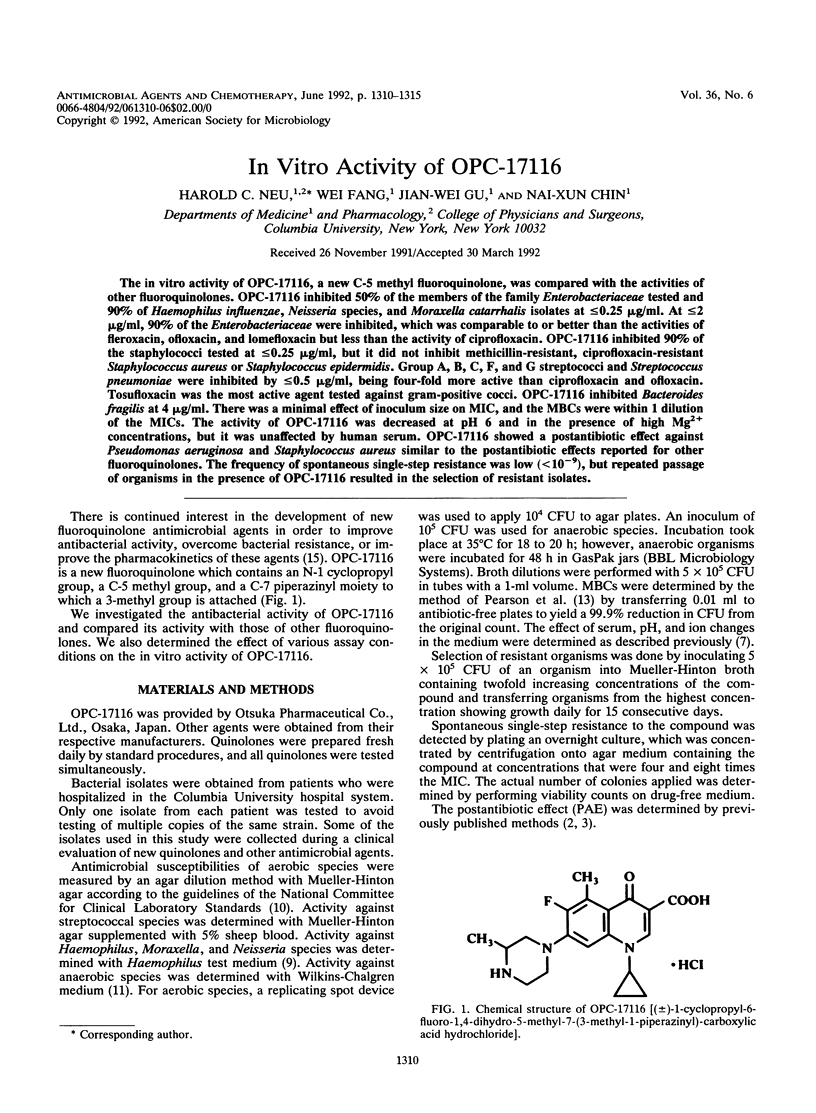
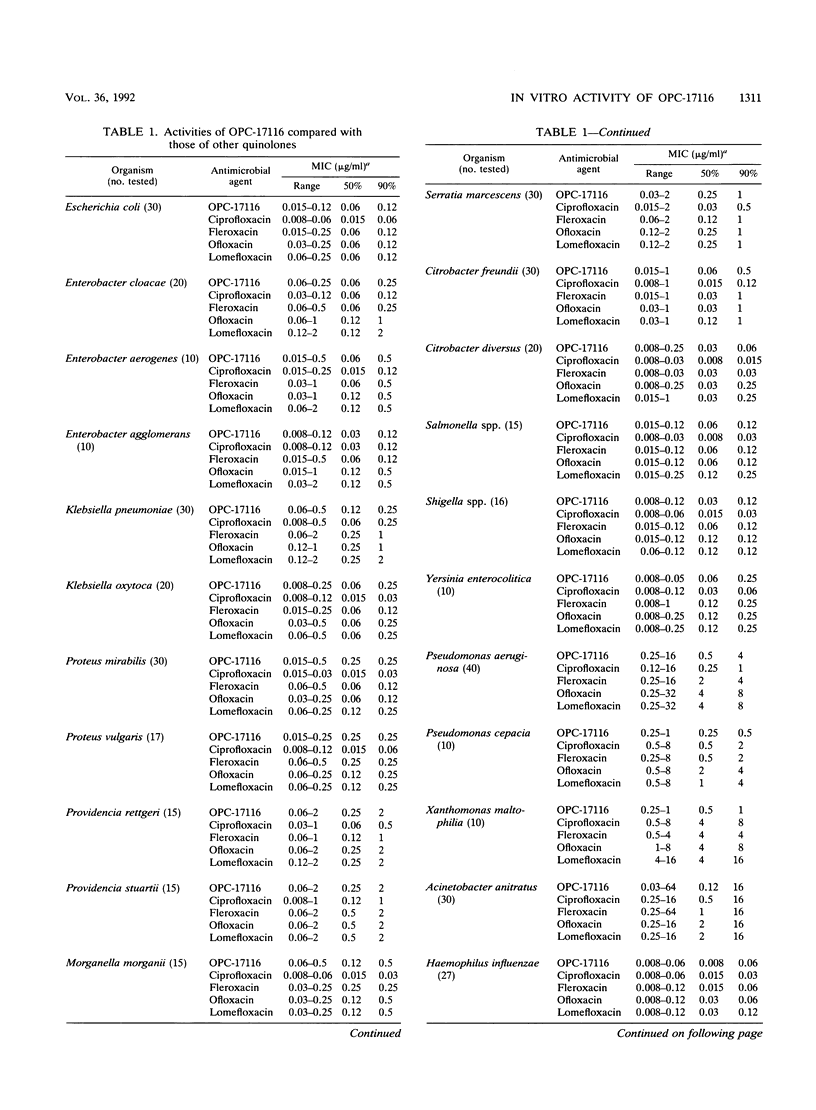
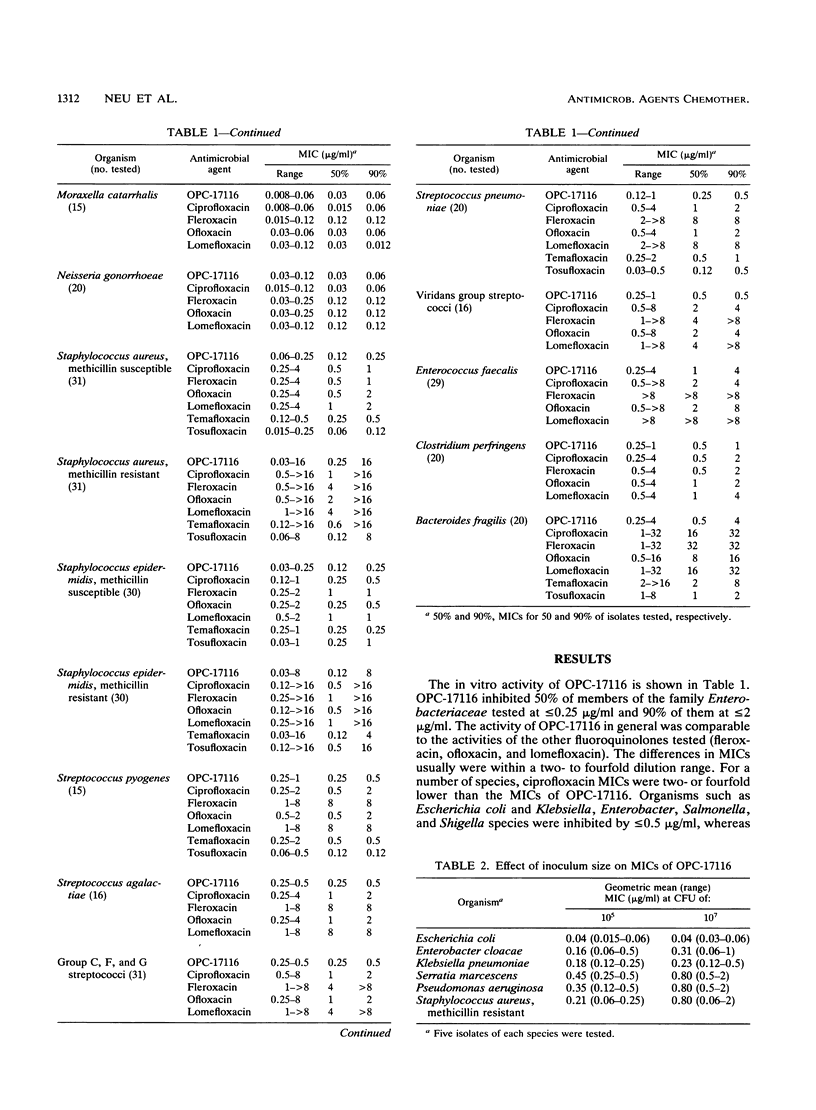
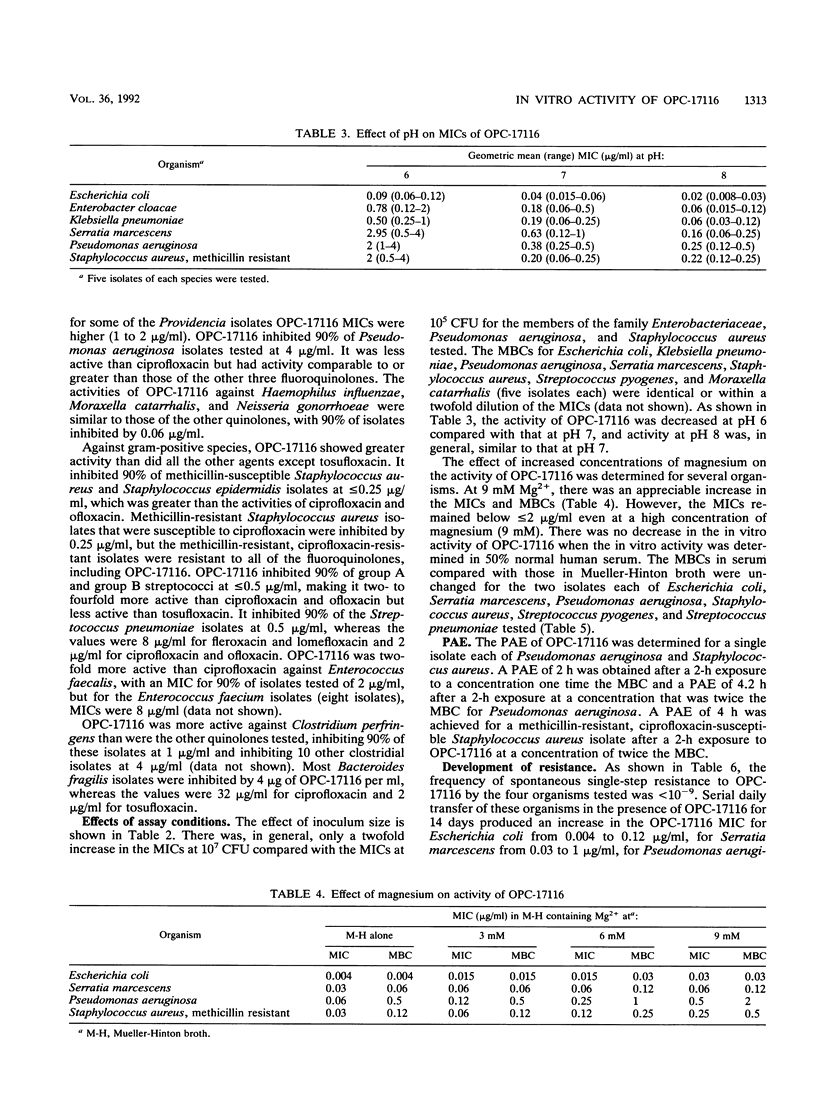
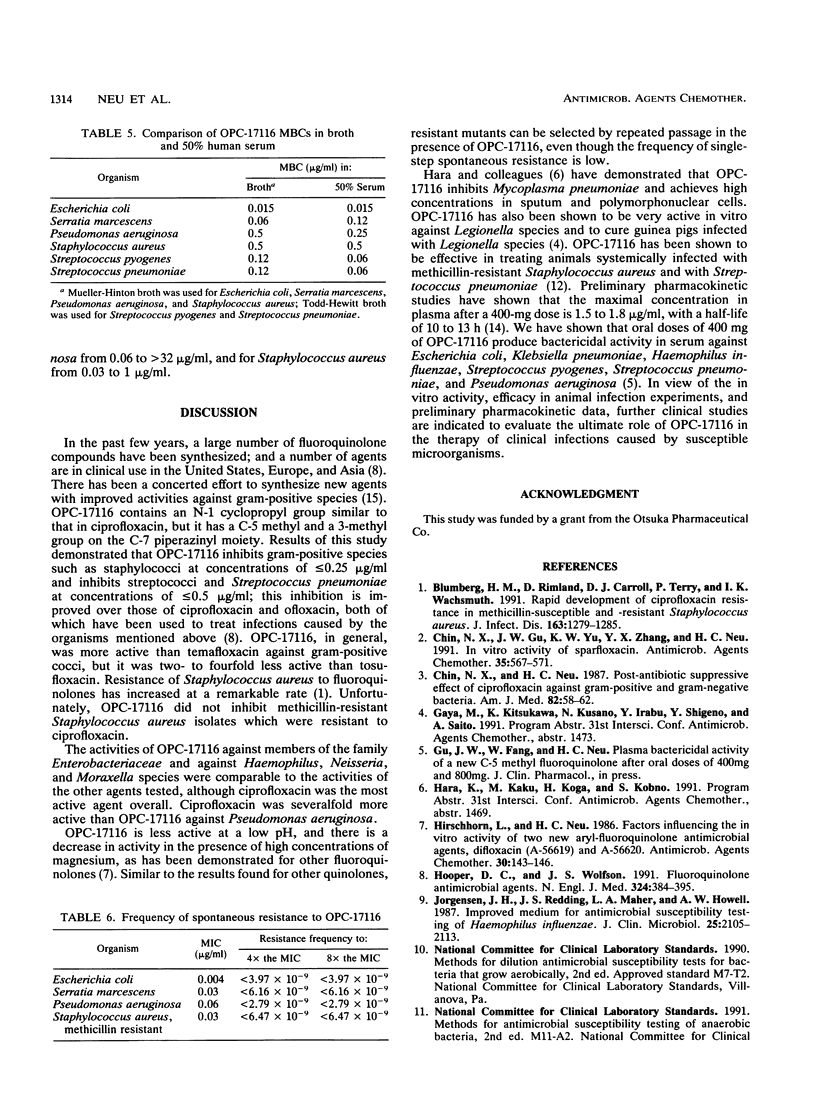
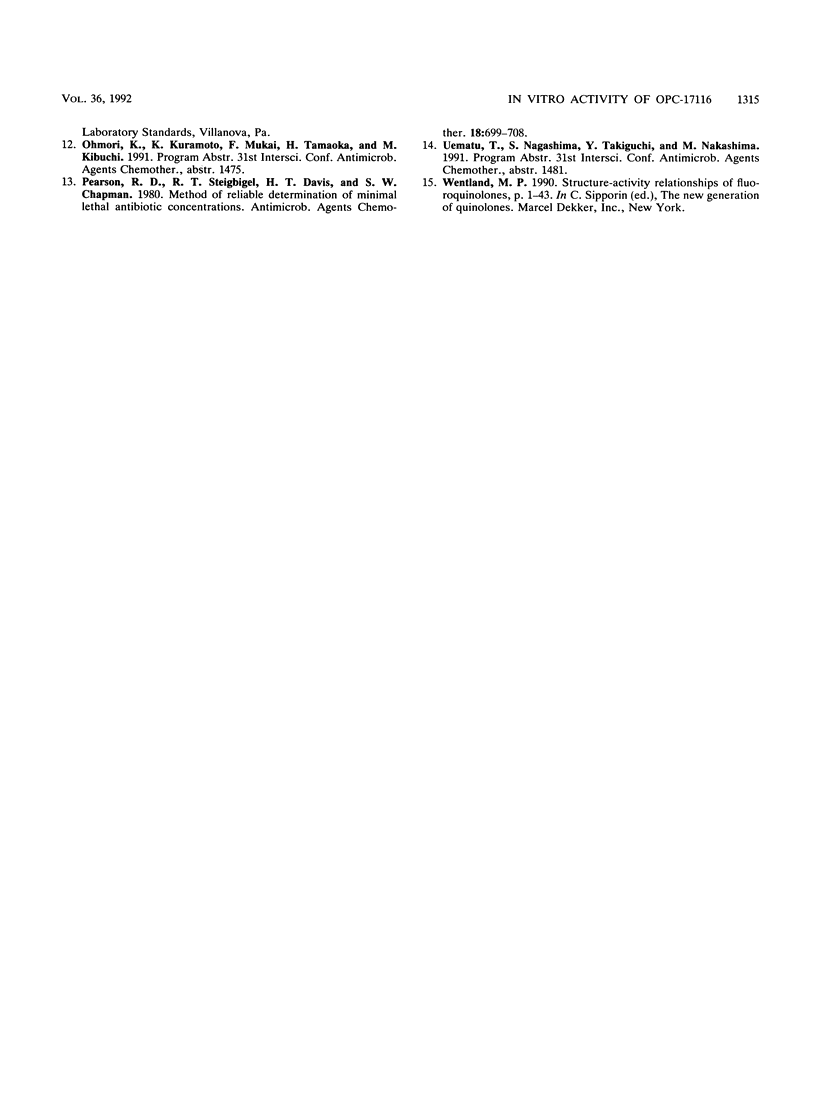
Selected References
These references are in PubMed. This may not be the complete list of references from this article.
- Blumberg H. M., Rimland D., Carroll D. J., Terry P., Wachsmuth I. K. Rapid development of ciprofloxacin resistance in methicillin-susceptible and -resistant Staphylococcus aureus. J Infect Dis. 1991 Jun;163(6):1279–1285. doi: 10.1093/infdis/163.6.1279. [DOI] [PubMed] [Google Scholar]
- Chin N. X., Gu J. W., Yu K. W., Zhang Y. X., Neu H. C. In vitro activity of sparfloxacin. Antimicrob Agents Chemother. 1991 Mar;35(3):567–571. doi: 10.1128/aac.35.3.567. [DOI] [PMC free article] [PubMed] [Google Scholar]
- Chin N. X., Neu H. C. Post-antibiotic suppressive effect of ciprofloxacin against gram-positive and gram-negative bacteria. Am J Med. 1987 Apr 27;82(4A):58–62. [PubMed] [Google Scholar]
- Hirschhorn L., Neu H. C. Factors influencing the in vitro activity of two new aryl-fluoroquinolone antimicrobial agents, difloxacin (A-56619) and A-56620. Antimicrob Agents Chemother. 1986 Jul;30(1):143–146. doi: 10.1128/aac.30.1.143. [DOI] [PMC free article] [PubMed] [Google Scholar]
- Hooper D. C., Wolfson J. S. Fluoroquinolone antimicrobial agents. N Engl J Med. 1991 Feb 7;324(6):384–394. doi: 10.1056/NEJM199102073240606. [DOI] [PubMed] [Google Scholar]
- Jorgensen J. H., Redding J. S., Maher L. A., Howell A. W. Improved medium for antimicrobial susceptibility testing of Haemophilus influenzae. J Clin Microbiol. 1987 Nov;25(11):2105–2113. doi: 10.1128/jcm.25.11.2105-2113.1987. [DOI] [PMC free article] [PubMed] [Google Scholar]
- Pearson R. D., Steigbigel R. T., Davis H. T., Chapman S. W. Method of reliable determination of minimal lethal antibiotic concentrations. Antimicrob Agents Chemother. 1980 Nov;18(5):699–708. doi: 10.1128/aac.18.5.699. [DOI] [PMC free article] [PubMed] [Google Scholar]


